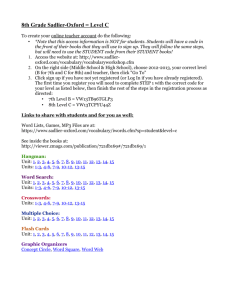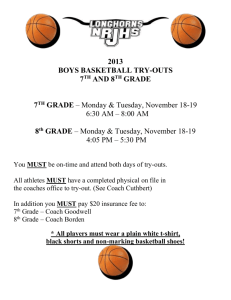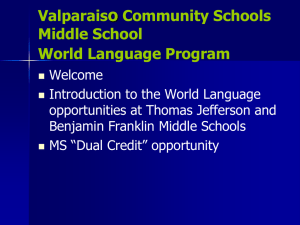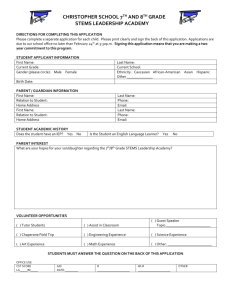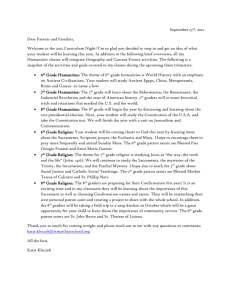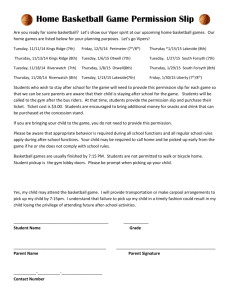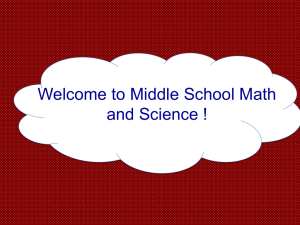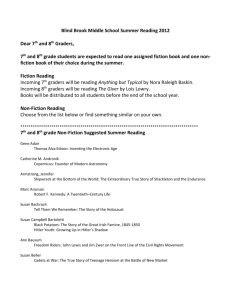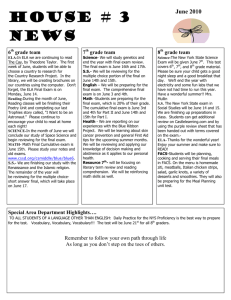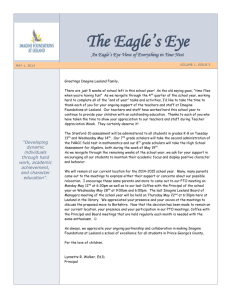Core Subject Topics Students Should Know* Grades 7, 8
advertisement
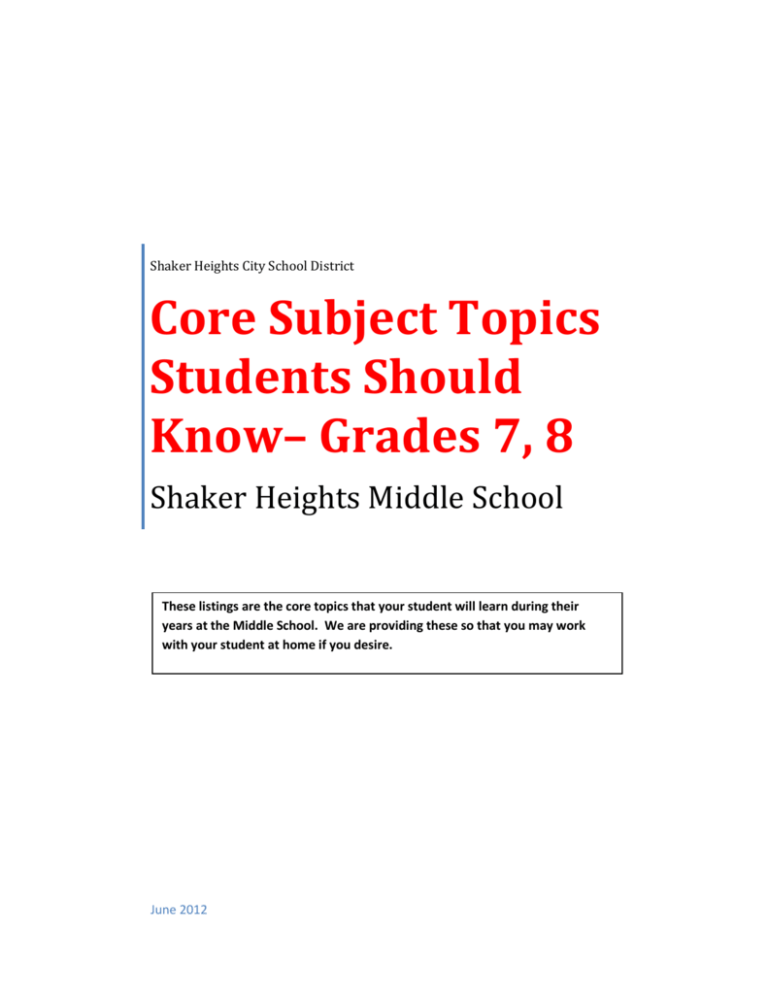
Shaker Heights City School District Core Subject Topics Students Should Know– Grades 7, 8 Shaker Heights Middle School These listings are the core topics that your student will learn during their years at the Middle School. We are providing these so that you may work with your student at home if you desire. June 2012 Language Arts Reading List College Prep - 7th Grade Required Books: Al Capone Does My Shirts - Gennifer Choldenko Trouble Don’t Last - Shelley Pearsall Supplemental Books: Bud, Bud Not Buddy - Christopher Paul Curtis Double Dutch - Sharon Draper A Single Shard - Linda Sue Park The River - Gary Paulsen Advanced English – 7th Grade Required Books: A Midsummer Night’s Dream - William Shakespeare Trouble Don’t Last - Shelley Pearsall And Then There Were None - Agatha Christie Supplemental Books: The Adventures of Tom Sawyer - Mark Twain Animal Farm - George Orwell Treasure Island - Robert Louis Stevenson Advanced English - 8th Grade Required Books: Holocaust Piece: Supplemental Books: Sharon Draper titles: *CP Fahrenheit 451 - Ray Bradbury To Kill a Mockingbird - Harper Lee* (Night - Elie Wiesel*, In the Mouth of the Wolf - Rose Zar,* and/or Diary Of Anne Frank The Taming of the Shrew - William Shakespeare Tears of a Tiger, Forged by Fire, Darkness before Dawn, Romiette and Julio and /or Copper Sun)* The Outsiders - S.E. Hinton* Soldier’s Heart - Gary Paulsen* Flowers for Algernon - Daniel Keyes The Pigman - Paul Zindel* Math Topics Students Should Know 7th Grade Place value Operations with integers (using a number line) Evaluating expressions Input/output tables (t-chart) given an expression Fraction, decimal, percent equivalences Operations with fractions with different denominators and decimals Classification of polygons Concept of area and perimeter (circumference) of polygons and circles Concept of surface area and volume (using cubes) Coordinate graphing Square and square roots from 1-12 Honors/Advanced 7th Grade Linear vs. nonlinear relationships Finding a rule from a pattern or sequence 8th Grade Operations with integers (without a calculator) Operations with fractions, decimals and percents Unit rate (i.e. $16/4 boxes = $4/1box or $4 per box…y = 4x) Slope of a line Solving 2-step equations with integers Composite area and volume formulas Evaluating expressions (i.e. evaluate 2x+3y when x = -4 and y = 5) Pythagorean Theorem Honors/Advanced 8th Grade Fluency with fractions and decimals (without calculator) Making comparisons using surface area and volume Solving equations with variables on both sides Pythagorean Theorem Proportional reasoning problems (scale factor, similar figures) Write an equation from a problem situation (y = mx + b) 7th Grade Science: 2012-2013 Key Topics Astronomy: Students need to know: - Patterns and cycles in the Solar System, including moon phases, eclipses and tides. Earth Science: Students need to know: - The properties of the atmosphere and air/ocean currents and their influence on global climates. Biogeochemical cycles (carbon, nitrogen & hydrologic cycles). Environmental impacts and effects as they relate to the various cycles. Life Science: Students need to know: - Ecosystems, biomes and transfer of energy and matter, populations, abiotic / biotic factors and photosynthesis (including the chemical formula). Transfer of matter between organisms and their physical environment. Physical Science: Students need to know: - Energy can be transferred in many ways. Elements and compounds can be classified by their properties. Energy can be transferred or transformed, but is always conserved. 8th Grade Science: 2012-2013 Key Topics Astronomy Students need to understand how the relative position and predictable motions of the Sun, Moon and Earth lead to days, years, seasons, eclipses, tides and phases of the moon. Students need to be able to distinguish between a comet, asteroid, and meteoroid. They also need to distinguish between a meteoroid, meteor and a meteoroite. Students need to understand the difference between a spiral, irregular and elliptical galaxy. Students need to be able to name and distinguish between tools (telescopes, probes, satellites and spacecraft) that are used to explore the universe. Earth Science Students need to understand the movement of convection currents and how they lead to plate movement, the process in the rock cycle, earthquakes, volcanoes, mountain building and other landforms. Life Science Students need to be able to compare and contrast asexual and sexual reproduction. Students need to able to analyze the fossil record and the diversity of organisms throughout geologic history. Students need to understand the process of natural selection. Physical Science Students need to understand the relationship between force and motion. Students need to be able to distinguish between speed and velocity and they need to be able to calculate the speed of an object. Students need to understand the concept of energy transfer via waves.
